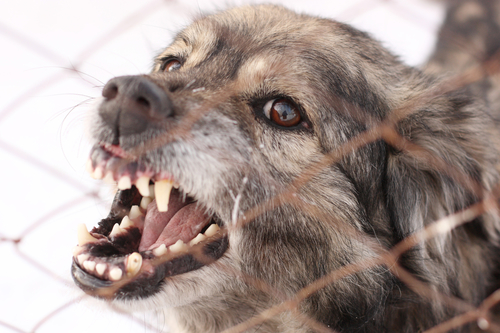 If you work with dogs that have bitten or threatened family members you know how complex and emotional these problems are. There is real danger in living with a dog that is likely to bite. The first principle for anyone working with these types of problems is to help dog owners figure out how to manage the dog in the short-term so that it can’t hurt anyone.
If you work with dogs that have bitten or threatened family members you know how complex and emotional these problems are. There is real danger in living with a dog that is likely to bite. The first principle for anyone working with these types of problems is to help dog owners figure out how to manage the dog in the short-term so that it can’t hurt anyone.
During our years of working with aggression, we’ve seen certain mistakes made repeatedly. In fact when we first started out, we made one or two ourselves. And while we aren’t perfect, we’ve learned through experience and education how to avoid making the following mistakes.
1. The first mistake to avoid is uncritically accepting a dog owner’s interpretation of the “why” of their dog’s behavior. Just like human psychologists provide insights and understanding to relationship problems between human family members, CAABs and other pet behavior professionals do the same when one of the family members is the dog.
A couple of examples from recent cases – an owner believed her dog’s food guarding was about "dominance", when it turned out the dog was actually fearful and defensive. Or the owner who speculated his dog had been abused – even though he had no supporting evidence of that – when in reality the dog was showing territorial and predatory-like behavior toward him – a very uncommon but dangerous type of aggression.
2. The second mistake to avoid is limiting owners to just one method to change the dog’s behavior. Simply waiting to reinforce or reward non-aggressive behavior may not be sufficient or effective. The learning literature is clear – preventing the response that needs to change – in this case the aggression – leads to faster counter conditioning of alternative behaviors. For example, a head collar or a blocking board can be very useful tools when working with aggression that keep the owner safe while still avoiding harsh punishment that often escalates aggression. Professionals who work with aggression MUST be willing to use a variety of tools and techniques while avoiding harming dogs or making aggression worse.
3. The third mistake to avoid is creating a behavior or modification plan that is simply too difficult or impractical for owners to implement. We can’t for example, expect owners to spend large portions of their free time in training activities, avoid touching or handling their dog for many weeks or months, or confining their dog to a crate or other space for more hours than not. While many professionals complain – partially legitimately – about owners who don’t follow through with training recommendations – the question must be asked WHY does that happen? As behavior professionals it is our job to create a plan that owners who sincerely want to work with their dogs – can follow. A plan that conforms to scientific learning principles and understanding of dog behavior, but one that is also practical and do-able and doesn’t require hundreds of repetitions with very little change in behavior.
You can learn to avoid these mistakes and MORE! If you’re a behavior or training professional who wants become more effective and successful and learn from certified professionals with almost 30 years of experience running a successful behavior consulting practice, then join Behavior Education Network – we provide Scientific Pet Behavior Education and Coaching in a Supportive, Community Environment.
Just return to our Home Page and click any of the Subscribe Now buttons to start your risk free monthly membership.
Leave A Response